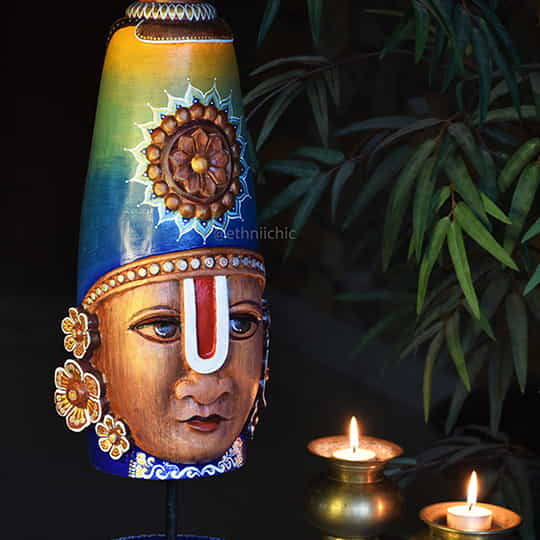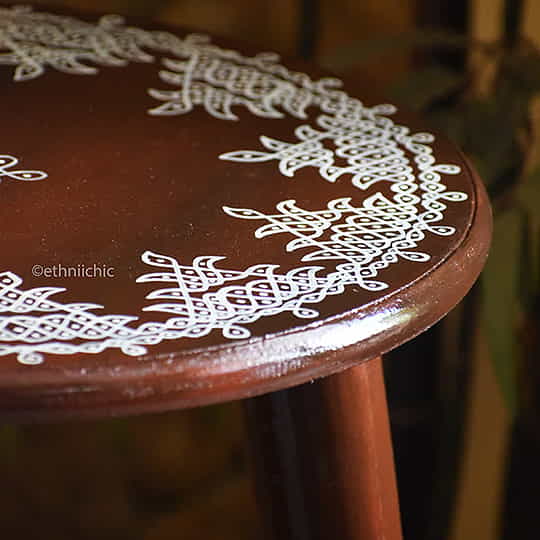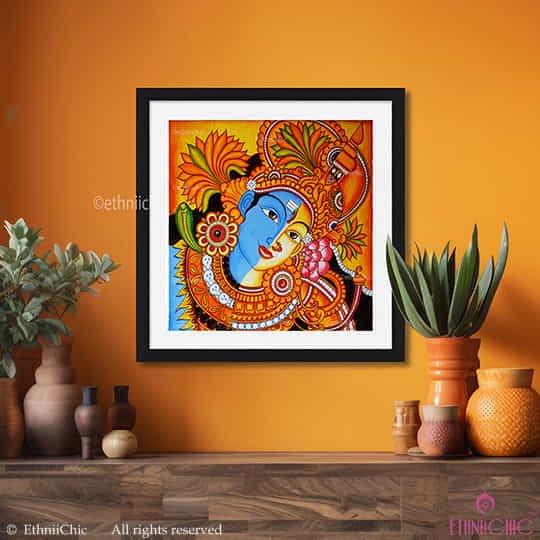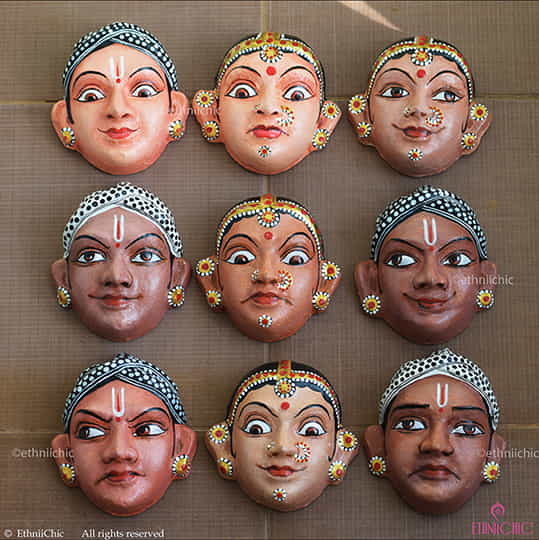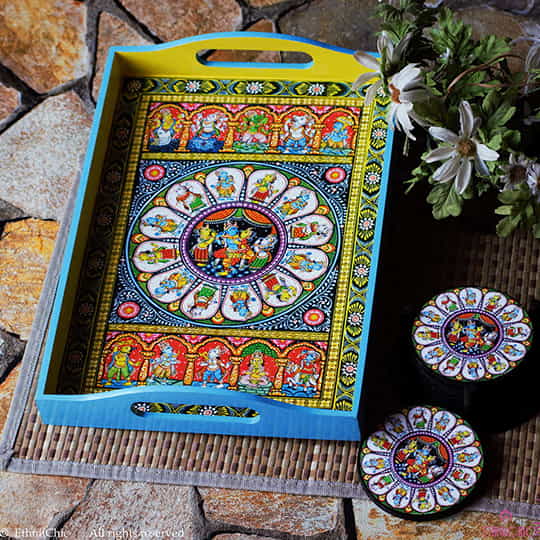India, with its rich and diverse artistic heritage, offers a treasure trove of inspiration for home decor. Whether you lean toward traditional elegance or modern minimalism, Indian art has something to offer. By blending elements of this heritage with contemporary styles, you can create a home that is both unique and timeless. Let’s explore how you can incorporate Indian art into your decor while striking a balance between tradition and modernity.
Understanding the Diversity of Indian Art
Before diving into decor ideas, it’s essential to understand the vast array of Indian art forms. From vibrant Madhubani paintings to intricate Mughal miniatures, every region in India boasts its own distinctive artistic tradition. Here are some key styles:
- Madhubani Art: Originating from Bihar, this folk art is characterized by bold lines, geometric patterns, and vivid colors. Often depicting Hindu deities, nature, and mythology, Madhubani art is perfect for adding a rustic yet colorful touch to your walls.
- Warli Art: A tribal art form from Maharashtra, Warli paintings feature simple, monochromatic depictions of daily life, nature, and community celebrations. Their minimalistic and earthy aesthetic blends well with contemporary decor.
- Pichwai and Phad Paintings: These intricate Rajasthani art forms are rich in detail and color. Pichwai paintings often depict Lord Krishna’s tales, while Phad paintings tell elaborate stories from folklore. They serve as striking focal points in traditional or eclectic interiors.
- Mughal and Rajasthani Miniatures: These detailed paintings highlight historical and royal themes. The delicate brushwork and gold accents can add a regal charm to your home.
- Tanjore Paintings: Originating from Tamil Nadu, Tanjore paintings are known for their rich use of gold foil, bright colors, and Hindu religious themes. They add grandeur and a sense of opulence to a space.
- Kalamkari: A hand-painted or block-printed textile art from Andhra Pradesh, Kalamkari features intricate depictions of mythology and nature. These fabrics can be used for upholstery, cushions, or wall hangings.
Each of these art forms carries its own cultural significance, allowing you to infuse a story and depth into your home decor.
Bringing Traditional Indian Art into Modern Interiors
Modern homes often follow clean lines and minimalistic aesthetics. However, this doesn’t mean Indian art can’t fit in seamlessly. Here are some ways to integrate traditional Indian art into a contemporary setting:
- Statement Walls with Indian Paintings
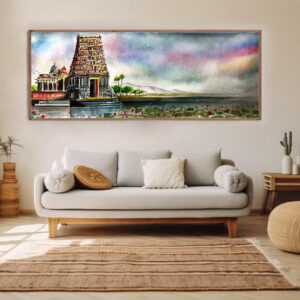
A single, large painting or an array of smaller artworks can transform an empty wall. Consider placing a vibrant Madhubani or Pichwai painting in your living room to create a focal point. If your home follows a neutral palette, opt for monochrome Warli art to maintain subtlety while adding cultural depth.
- Mixing Textiles and Patterns
Indian art is deeply tied to textile traditions. Block-printed Kalamkari curtains, handwoven Ikat upholstery, or embroidered Phulkari cushion covers can introduce Indian artistry without overwhelming the space. Mixing these with neutral-toned furniture helps maintain balance.
- Fusion of Furniture Styles
A blend of modern furniture with traditional Indian wooden carvings or inlay work can create a stunning contrast. A sleek glass-top dining table with antique wooden chairs featuring Rajasthani or Kashmiri or Saharanpur carvings is a perfect example.
- Using Art as Functional Decor
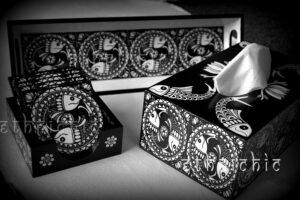
Instead of limiting Indian art to walls, incorporate it into everyday decor. Madhubani-painted trays, Warli-adorned coasters, or blue pottery vases can add artistic flair to functional pieces. Hand-painted tiles inspired by Mughal motifs can also be used as tabletops or backsplashes.
- Layering with Rugs and Carpets
Indian carpets, especially those from Kashmir or Jaipur, showcase stunning handwoven artistry. A Persian-inspired Kashmiri carpet can elevate your living room, while a Dhurrie rug in pastel hues can add warmth to a contemporary setting.
- Illuminating with Traditional Lighting
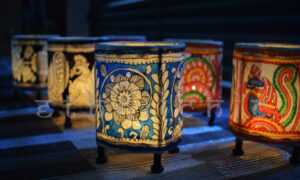
Brass lamps, intricate lanterns, and traditional diyas can create a cozy, artistic ambiance. Pairing a Moroccan-inspired Jaali lamp with a minimalist setting offers an interplay of light and shadow, adding character to your interiors.
Achieving a Balanced Look: Dos and Don’ts
While blending Indian art with modern decor, it’s essential to strike the right balance to avoid an overpowering or cluttered look. Here are some key guidelines:
Dos:
- Choose a Focal Point: Highlight one strong Indian artwork or decorative piece instead of scattering too many elements.
- Blend Textures Thoughtfully: Balance ornate elements with clean, modern surfaces to prevent visual chaos.
- Use Complementary Colors: Indian art is often vibrant; contrast it with muted walls or neutral-toned furniture.
- Mix Modern and Traditional Thoughtfully: A contemporary sofa with a handwoven throw or a sleek dining table with traditional chairs can create a harmonious blend.
- Opt for Minimal Yet Impactful Pieces: If your space is modern and minimalistic, choose subtle yet culturally rich artworks like Warli murals or Madhubani accents.
Don’ts:
- Overcrowd with Too Many Elements: Avoid cramming multiple artworks and patterns in one space. Instead, create breathing room.
- Clash Colors: Ensure the colors of your Indian art complement rather than compete with your existing decor.
- Ignore Context: Some Indian artworks carry religious or cultural significance. Place them in appropriate spaces to respect their heritage.
- Mix Too Many Styles: While blending styles is encouraged, too many contrasting elements can make the space feel chaotic rather than cohesive.
Curating Your Own Aesthetic
The beauty of using Indian art in home decor lies in personalization. Whether you wish to honor your heritage or simply admire Indian craftsmanship, curate an aesthetic that resonates with your taste.
- Minimalists may opt for monochrome Warli murals or handwoven Dhurries.
- Maximalists can embrace a riot of colors with bold Madhubani paintings, embroidered textiles, and gilded Tanjore art.
- Bohemian Decor Enthusiasts might enjoy mixing earthy pottery, brass artifacts, and hand-painted Kalamkari fabrics.
- Modernists can subtly infuse Indian art through geometric patterns in Ikat upholstery or structured wooden carvings.
Where to Source Authentic Indian Art
Finding authentic Indian art pieces is crucial to maintaining quality and cultural integrity. Here are some places to explore:
- Government Emporiums: State-run craft emporiums ensure authenticity and fair wages for artisans.
- Local Artisan Markets: Visit Dastakar, Dilli Haat, Sampoorn Flea market, local flea markets to meet the artisans directly.
- Online Platforms: Websites like EthniiChic curate authentic handmade pieces.
- Exhibitions and Art Galleries: Check out contemporary Indian artists who reimagine traditional art forms for modern homes.
Conclusion
Indian art offers an endless spectrum of possibilities for home decor, bridging the gap between tradition and modernity. Whether you choose bold paintings, intricate carvings, or artisanal textiles, each piece carries a story that adds soul to your home. By thoughtfully integrating these elements, you can create a space that is not just aesthetically pleasing but also deeply personal and culturally rich. So go ahead, explore the wonders of Indian art, and let it bring warmth and character to your living space!


